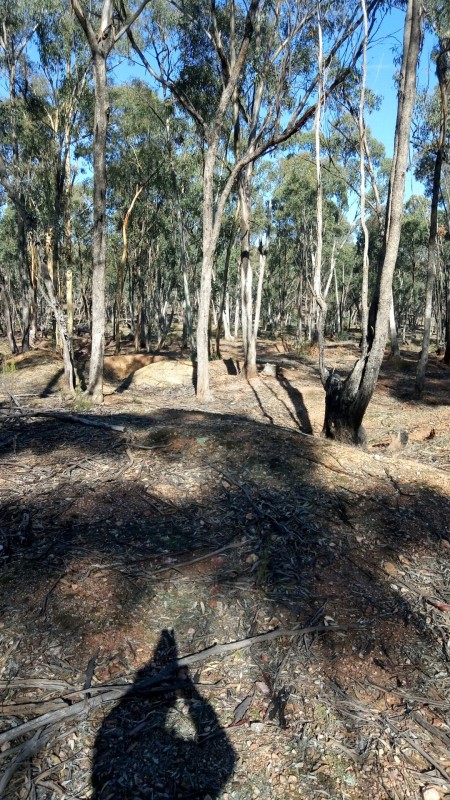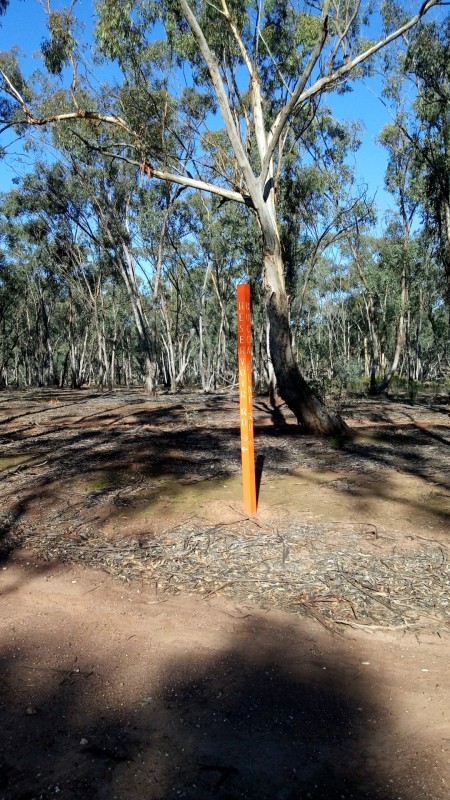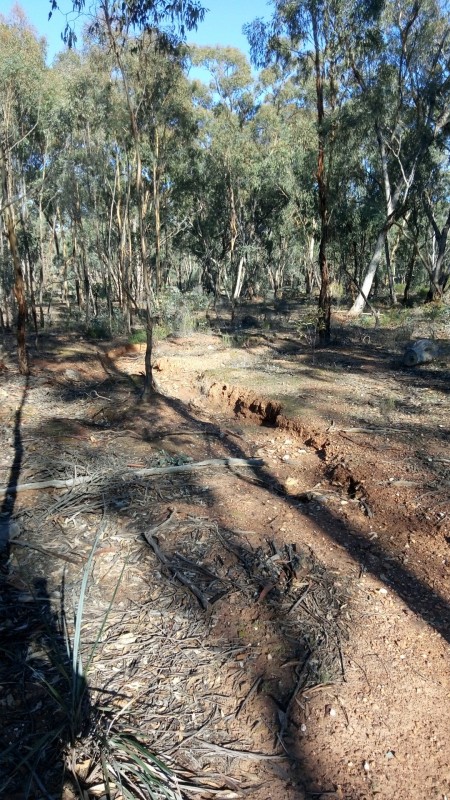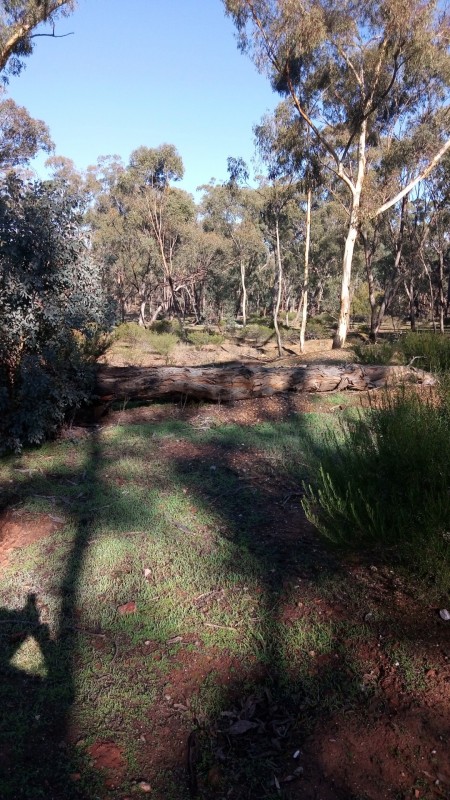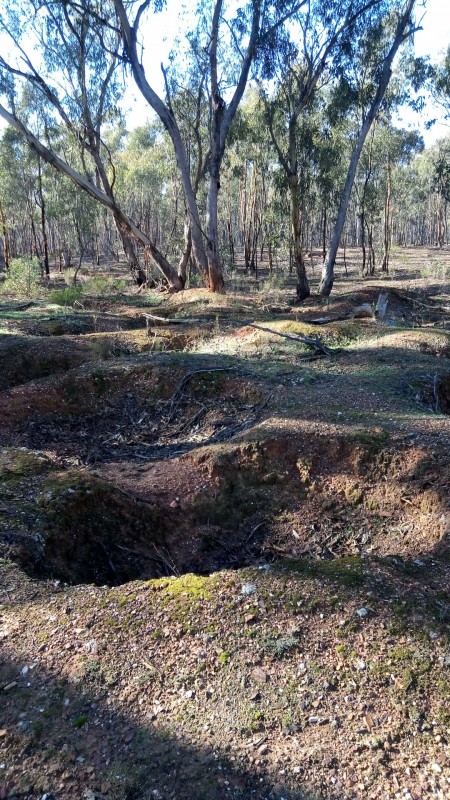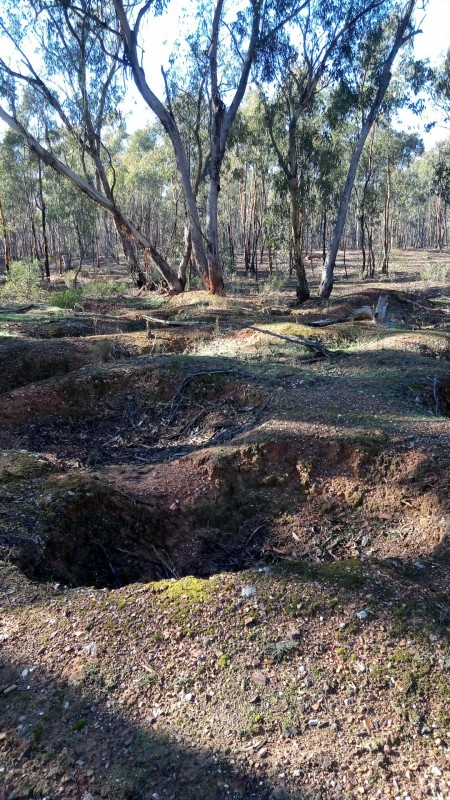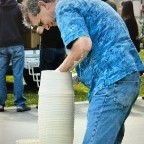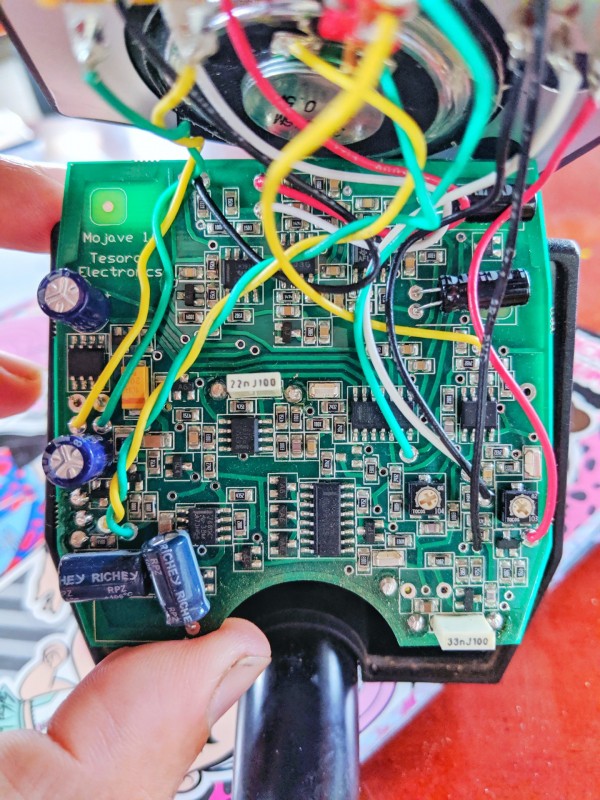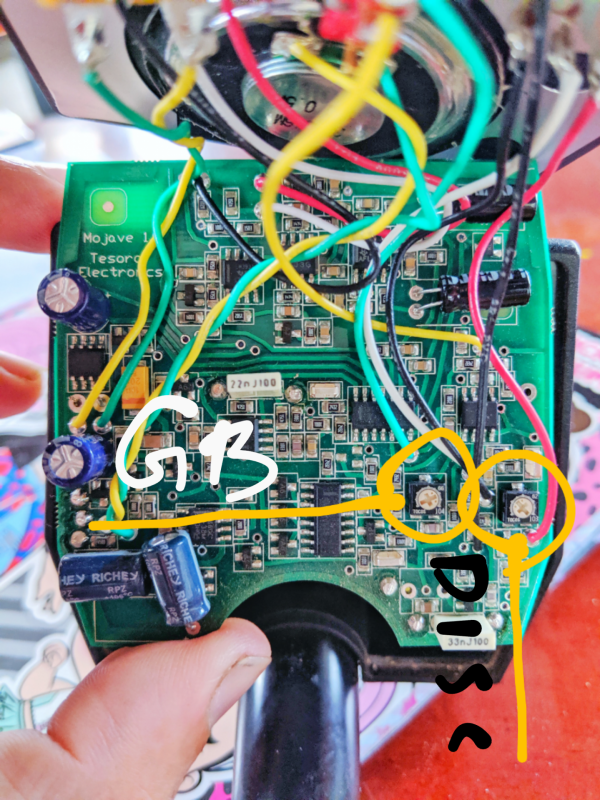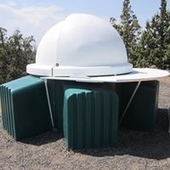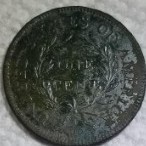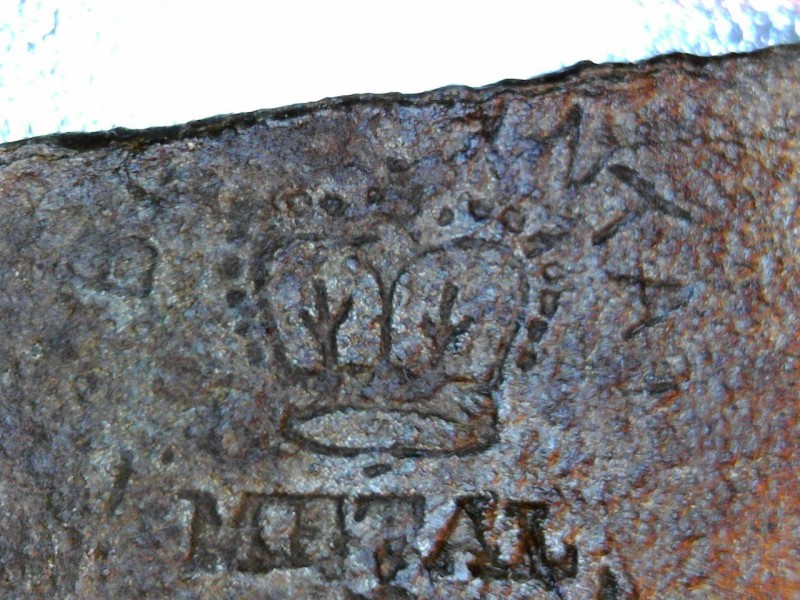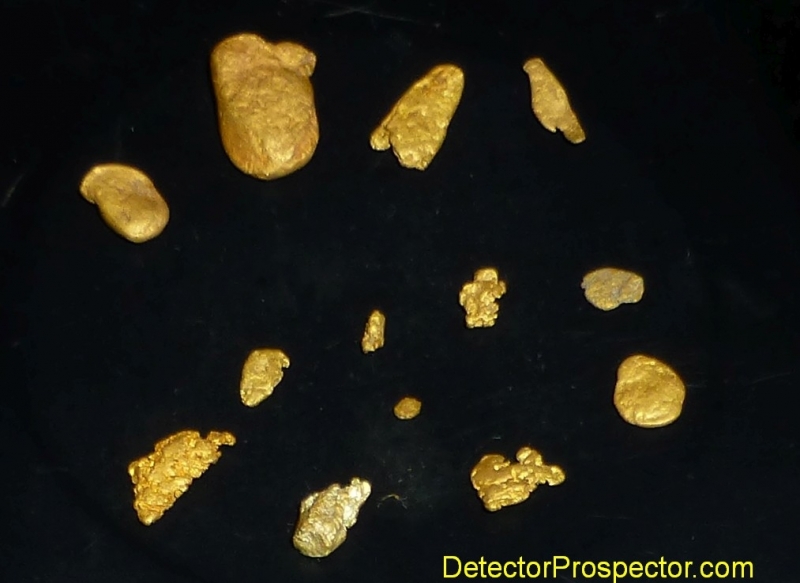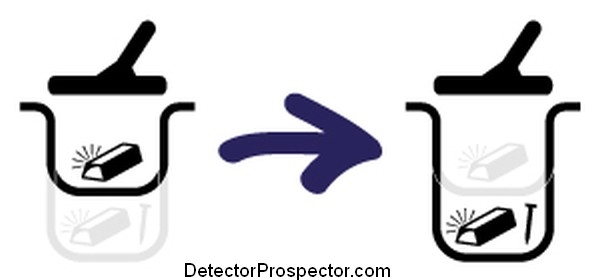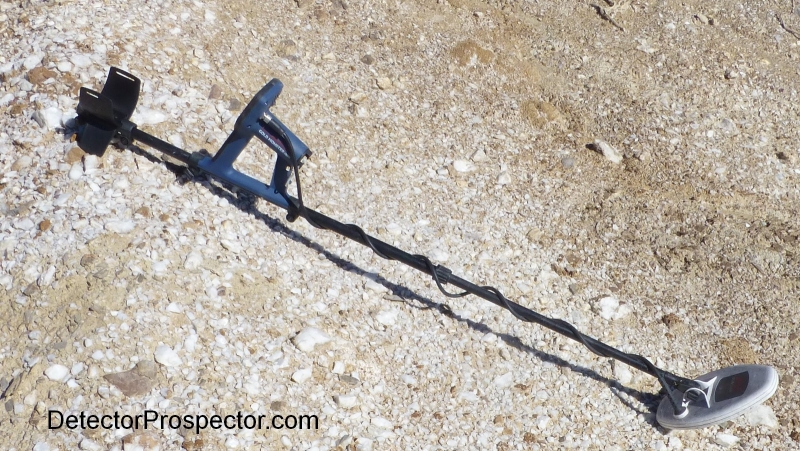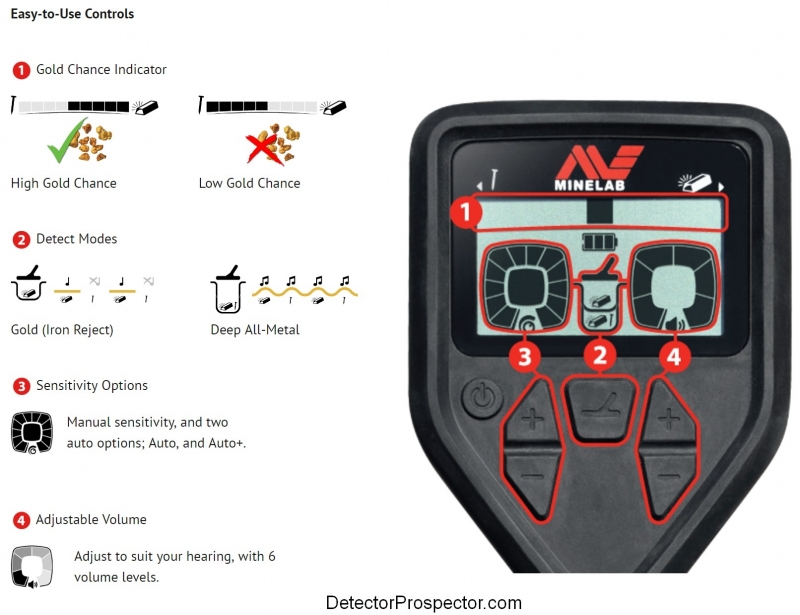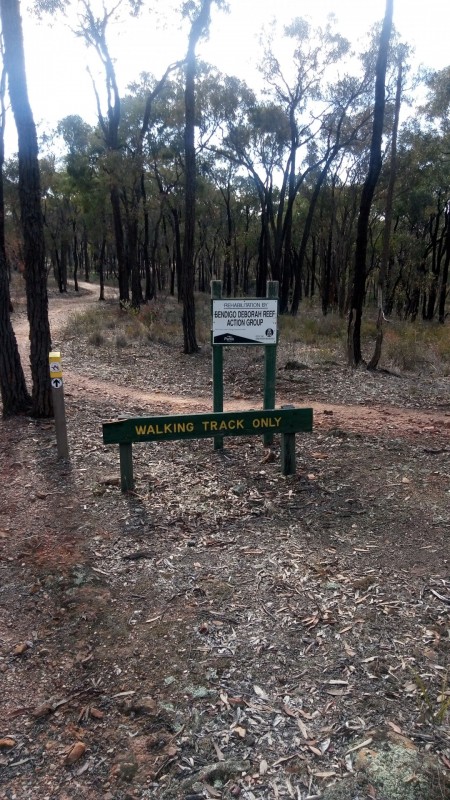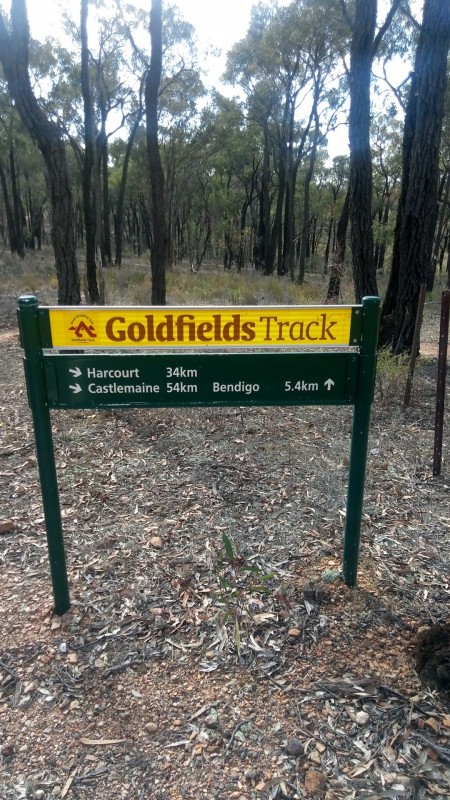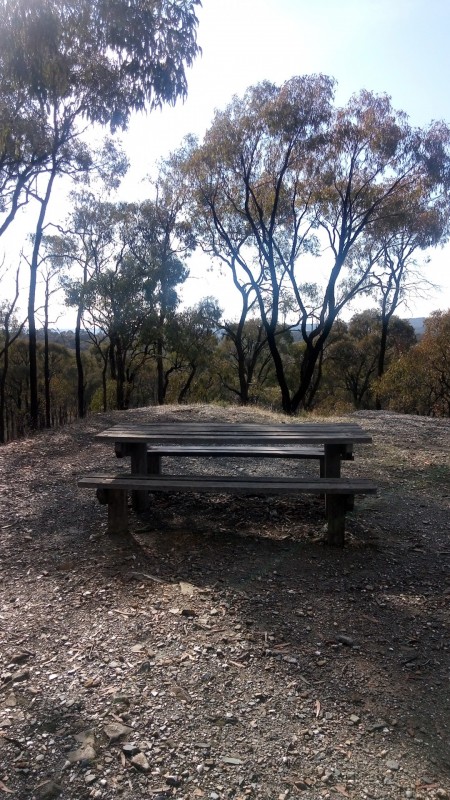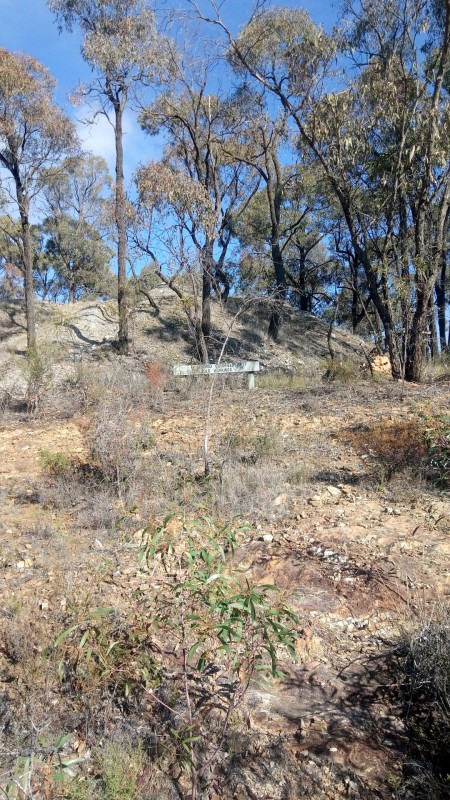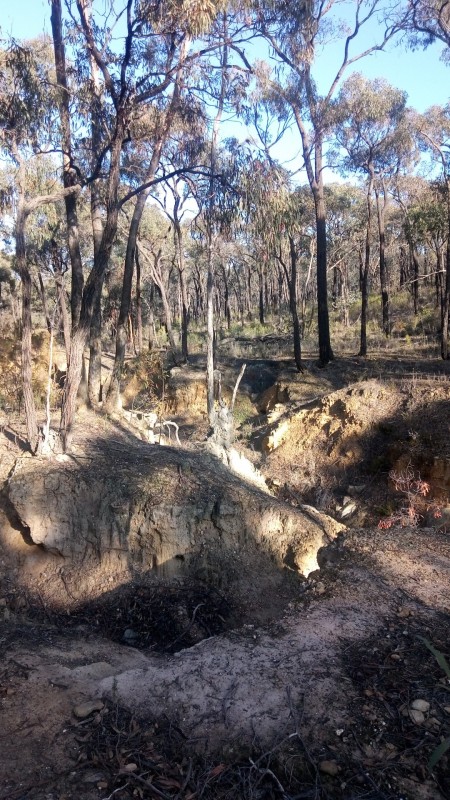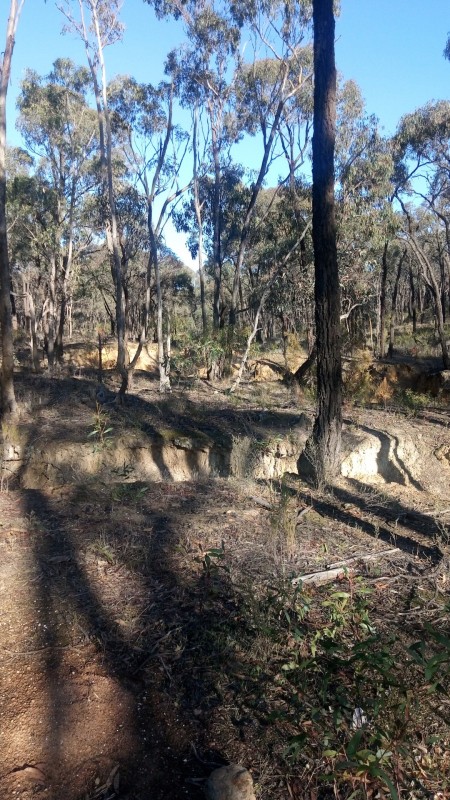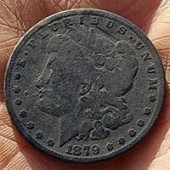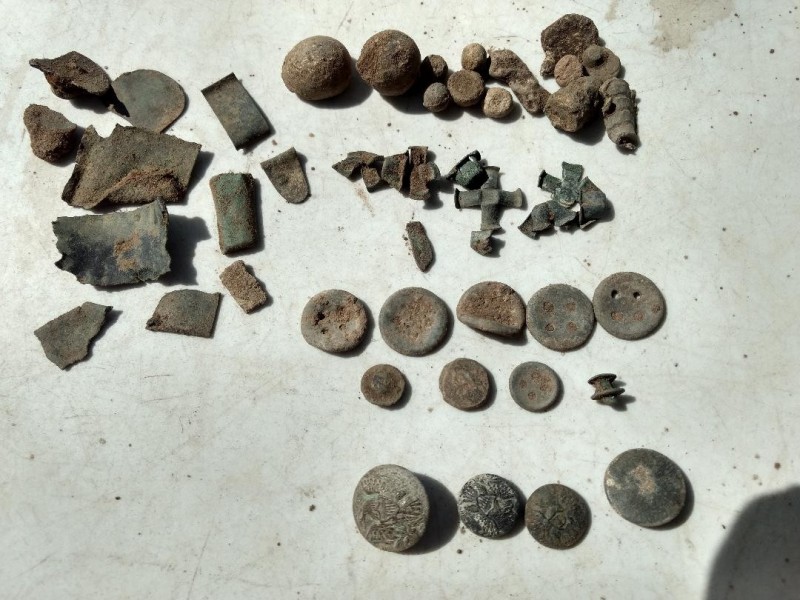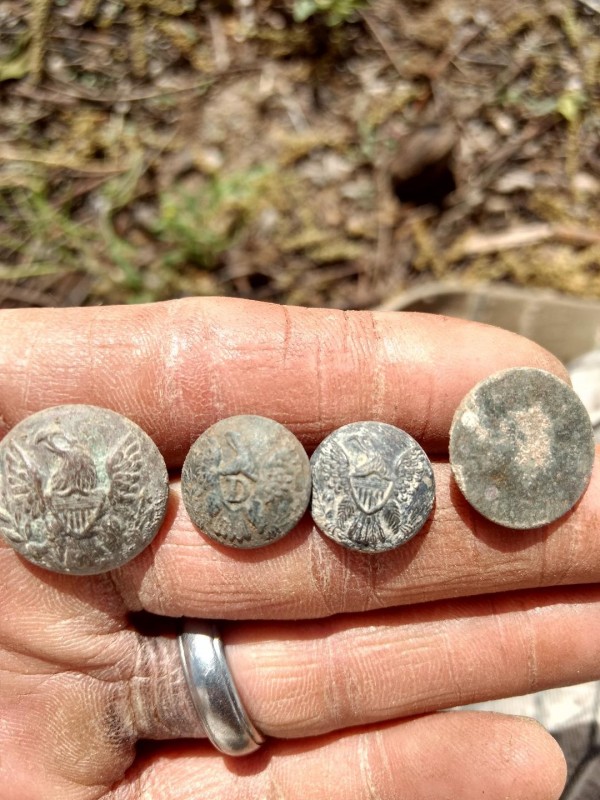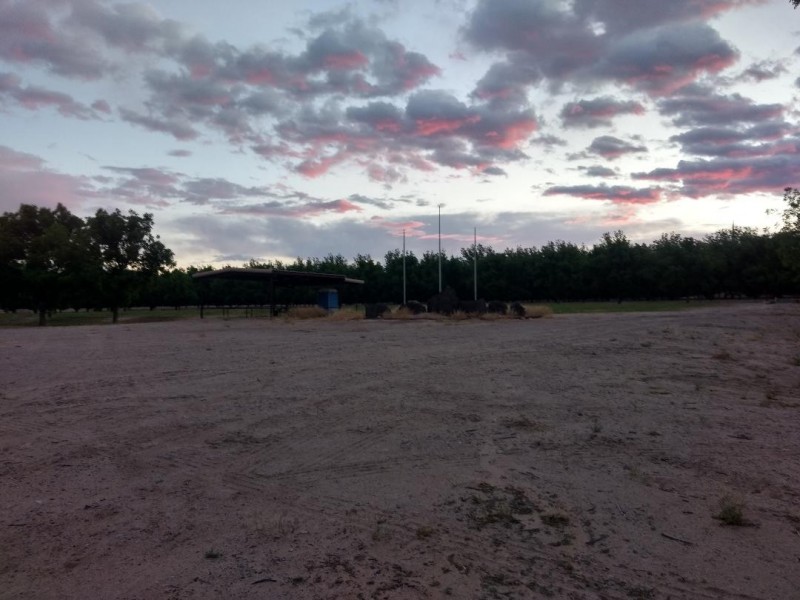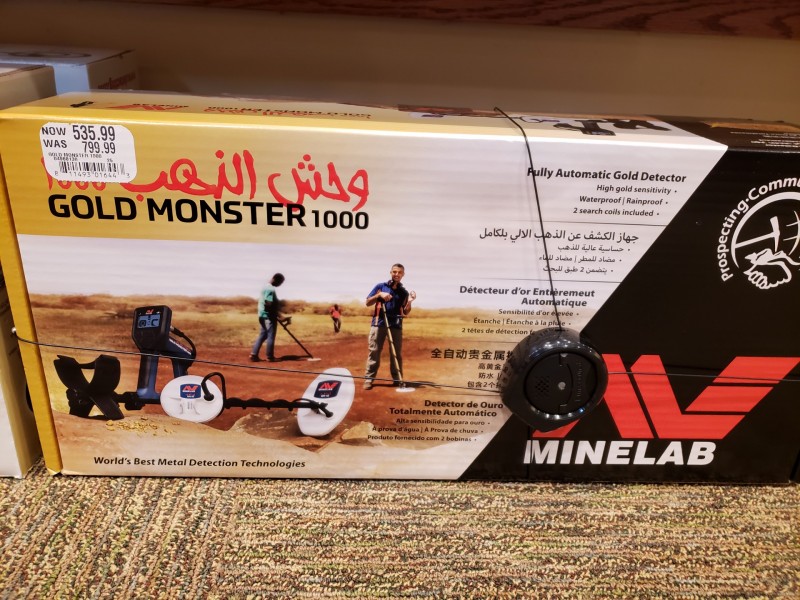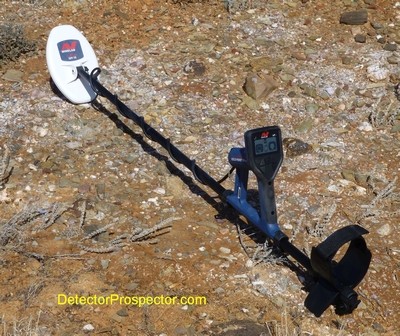Leaderboard
Popular Content
Showing content with the highest reputation on 05/17/2019 in all areas
-
It's been a good week all around. Dennis really got on the gold today, 15 nuggets total including a 3.4 gram piece. I'm going to rest up tomorrow, our flight leaves out of PHX on Sunday afternoon. We'll arrive in Perth on Tue, then meet up with Paul and Trent on Friday. We're just hoping our good luck hasn't run out. Tally Ho!7 points
-
A friend and I spent a couple days swinging around a couple junk filled ghost towns. I am very familiar with the Xp deus. I had also brought with the new to me Xp ORX. I spent my time swinging both the deus/ORX with the 9 Hf, 9x5Hf and my LF 11x13 coils. I found some good stuff and was really able to put the new ORX to work. I kept the ORX equipped with the 9x5hf coil. Deus with 9Hf coil. Also have my 11x13 on a straight shaft to easily switch to that. These site have been hit hard over the last few years by me and a ton of other people and have seen 3 to 4 large group hunts. Heres a few pics5 points
-
I briefly mentioned my problem with the GPZ 7000 14" stock coil. The problem was I dragged it behind the Rokon completely unaware of doing so and wore through the plastic cover exposing the copper windings inside. I contacted Friendly Minelab Dealer "Rege in PA" about getting a replacement. He put in the order but as time was drawing near for the OZ trip, there was no sign of a replacement coil in the pipeline. Rege was able do some gently encouragement and the Minelab Repair Center stepped up and found me a coil. I got it last week and have been using it all this week for my practice sessions for the Summer of OZ trip departing this Sunday. It seems they sent me the "super" coil because I'm having some incredible good luck this week on the local Yuma gold. Minelab, you have saved me from my self-inflicted misadventure. Gold photos of the last 2 mornings of detecting. I've been detecting some heavily hunted areas and finding gold around old dig holes. I'm using pretty standard settings, HY, Normal with Sens 15. I've gone back to the high dollar Etymotic in-ear monitors (earbuds). The Ety 4S model has much higher inpedance compared to typical earbuds.5 points
-
Many believe that the nugget gets rounded by it tumbling about. I have a large specimen that is flat on one side and I've always believed that it is that way because other objects passed over it as it stayed in place. This article confirms that for Blackwood, Australia and says: ‘A feature of many of the goldfields of Victoria was the finding of large masses of gold nuggets. They varied in size, and were not confined to any particular class of washdirt, nor with any regularity as to depth, but, from their disposition in restricted areas, certain belts can be regarded as typically nugget bearing. On account of the soft character of gold, nuggets of any size are always well rounded. This is due to the attrition of material passing over the nugget rather than rounded by rolling action. Many of the large nuggets had one side relatively flat, while the other was well rounded. Some of the nuggets were coated with oxides of manganese and iron; several had quartz attached to them, while a few were of ragged and roughly crystalline appearance.’ http://www.blackwoodpublishing.com/blackwood-eagle-nugget-found-1931/4 points
-
Knowing that my coin would never be graded as a very expensive coin although very desirable, I decided to make it look better for my personal viewing. I looked at a lot of U tube videos and read several things about cleaning silver without damaging the object. Just wanting to know the outcome before trying the method on my coin,. I tried it on other objects. I settled on using cotton balls, Q tips and non abrasive Carnuba oil auto polish. This didn't seem to leave any scratches, only cleaned and polished it. As you can see, all of the scratches and marks from being in the ground for about 140 plus years are still there.3 points
-
I picked up one good thing about this discussion, besides the overall stuff. That is, there's a benefit to running the frequency maxed out, as far as energy to the coil goes. I'll be doing that from now on, assuming it doesn't cause an excess noise problem. On mine, that's over an 8% gain in coil voltage. Nothing to sneer at. Jim3 points
-
Been doing MDing a long time with a Whites XLT. Just purchased a Equinox 800 and WOW!!, What a difference! Still carry the XLT as my back up. Love that Tool as well. Well,....Just wanted to say Hi.2 points
-
Carl on the Getech just posted air test distances. 13+" all metal, 1-2" less in GB. I'm assuming this is with the stock 12" dual field coil and a nickel. This is right in line with what I've saw with the exception of GB on doesn't reduce my depth. I'll check again and confirm.2 points
-
Sorry Mark I can't because I sold both of my TDI's just before I went in to hospital due to the surgery and recovery etc I was told that I would not be detecting any more but as I found out that is not the case, which means buying more in the future, lol.2 points
-
Hey Mitchel, Hope you get one! Otherwise enjoy being out in Gods country! Wish I could have made it out there too. I went to Oz when I was 18, but all I wanted to do was go to the beach back then.2 points
-
These sorts of descriptions are so hard to fathom. It must have been an amazing thing to see.2 points
-
Ok pals, I'd like to tell you that I had a breakthrough on the gold finding but I'd be lying. I've been here over a week on good workings and still haven't found a nugget. My first week here has me completely baffled. I even tried some of Fred's roadkill techniques on bedrock late today to no avail. I should be telling nugget stories and sharing nugget pictures but maybe later. I still expect good things. My thoughts runneth over but I'll try to add some humor to a rather bleak assessment of my first week here. What is worse than solitary confinement? Hunting for gold nuggets and not finding them! (Why you say you are out in nature, enjoying the fresh air and the roos and so on and so forth ...) That works for the first few days ... haha The reason why nugget hunting is worse than solitary confinement is that in solitary confinement you don't have any EXPECTATIONS! You MUST expect the next target to be gold when nugget hunting. We all know the definition for insanity, right? Insanity is when you do the same thing over and over again and you expect different results. This nugget hunting is driving me insane. So let me step it down to what actually happened today. When I left here going to go behind the caravan park I got a coffee at the gas station. This is coffee from a late machine not a drip coffee. The fella working there was friendly and I asked him about nuggets. His store is half a mile to where I'm going. He tells me he has lived there for 6 years and never looked for nuggets! We chatted a bit more ... coffee was $4.50A and I went back out to the car. I did an inspection and saw the left front tire low and I found out from him where to get it fixed. I got to the Tyre place before it opened but when it did I asked the guy working there about nuggets also. He doesn't hunt them either. We found the leak and while it was being repaired a local guy came in and said "I see you do what I do!" He was talking about detecting. He said he has a 2300 and is doing pretty good with it. He told me I should have brought mine rather than leave it in California. He was getting some tyres and I asked if he was going out later today thinking I could tag along. He said he wasn't and he didn't offer to tell me where I couldn't find nuggets with my 7000 so I left and went to the workings. While at the workings the thought occurred to me I should have made a deal with him. It was too late ... no way to hire or bribe him now! haha I began working the location by looking at the deep holes and following them out until they became more shallow. It was a wide area and it looked like sources for the workings came from several directions. I followed one run up to a reef and work that. I did this for about 4 hours without finding nuggets but finding bird shot. Yesterday I found a button and I knew I could go to a shop in Inglewood 20 minutes away and have an expert tell me something about it so it is just after 12 and I do it. The husband and wife tell me the button is not so valuable but it is from around 1880s. Cool I left them and went back to a place JR had sent me to earlier in the week. This time I went back with his recommendations in mind but came up short there also. It was much easier to find my way around this time. I know the roads and all the kangaroo bones. This was 3 hours of hunting. When I left I saw a lamb outside of the fence and I stopped at a farmhouse to tell them. The guy I chatted with was very nice and we started talking about nuggets. He doesn't hunt them but he told me about a couple of places. One was just across the field from his house. There are scrapings he said. Another one was behind the schoolhouse at Kingower. He and his wife said someone in their family had found a big nugget there many years ago. He said the finder was not allowed to keep it. It had to be sold to the government. I asked when this law was changed and he didn't know for sure. He also told me about a big nugget that had been found in the last couple of weeks around Wedderburn. The guy at the tire shop had mentioned it also and I said the Bendigo nugget and he said no ... different nugget. I'll have to hunt for that story when don't with my saga here. I left the farmer to go look at the scrapings he was talking about and they look just like all other workings I've seen in the last week. All have potential! What a also saw was a mob of about 200 kangaroos that were in full flight from my car. They don't let you get very close before they break and run and jump fences and sometime trip on them. It is hard to get a phone picture of scenes like that. At the end of the day I found a road that goes through the middle of workings on the Stone map and it was bedrock. I got the 800 out and detected these roads for about an hour. Some bullets, shotgun shells and iron but no gold there either. I'm sure there will be a few detectorists around this weekend. They'll be busy so I don't think I'll go to them but if they come to me we'll share a bit of info. I've got some specific spots and gullies to around here for the next couple of days and then I'm ready for a beach day. I'll probably get up early and go to Ocean Grove on Monday morning. That is subject to change. A week from today I'll be in Maryborough doing some comparing. Time is flying. I'm trying to keep it one day at a time. These pictures are loading in reverse order. That is a moon rise, almost full with the sun setting behind me. Australian football is on the TV.2 points
-
Zortan, there’s a lot to explore out there be careful and prepared it’s a lot of fun exploring, take chances and the fun can end quickly I carry sat com with me and plenty of gear although many roads are 2wd when the conditions are dry, stay out if it’s wet! this google earth KMZ file is a fun guide and will give you some interesting places to look at along with some information on the area and roads. http://www.forgottennevada.org/sites/newmap.html?mid=zXc1EpOap-5U.kejh8GxmneDQ good luck, have fun and be safe2 points
-
Great rundown and instruction, Chase. I especially like the part about letting the machine operate within its pre-set parameters. Very good advice. Thanks clive2 points
-
Good one Phrunt! Many of you may not know that I give pool/snooker lessons on occasion. It is a sport I've been doing all my life. I'm trying to draw some analogies to that and looking for nuggets and this is what I come up with. When I instruct a new student we have to spend time on the basics. The swing, the eyesight, where to hit the cue ball and where to aim at the object ball, the rail, so on and so forth. Similar basics have to be learned about nugget detecting before you can 'play the game.' Once you get the basics out of the way then you begin pocket balls (unless it is billiards). Then you start to develop favorite shots and learn how to use those in making runs (making several shots in a row) and then you develop some sense of gamesmanship rather than it all being luck. (Stick with me here I'm almost to my point.) You become a skilled player and not just an amateaur. The next level of progress has to do with being able to perform and go back to basics and produce shot after shot accurately. Some days this is easier than others. Some days the head wants to take a 'walk about' rather than concentrate. I refer to this as General Direction Shooting. I feel like I am General Direction Detecting right now. I know the basics and I know some of the game theory (find gold where it has been found before) but I don't know the geology that lets me get to the next level. (Next level you say ... how about just finding A NUGGET?) Nugget hunting does have a bit of competition involved. I'm trying to 'beat the earth' and find a nugget that the other expert detectorists before me missed. I'd like to repeat a pattern and 'shots' but some shots I don't see and you never see the same shot twice in nugget hunting. Somehow the oldtimers found lots and lots of nuggets. I need to tap into that gamesmanship. Time to swing.2 points
-
Hi I see that there is a lot of questions I will not answer all / confidentiality clause oblige .. some precision all the same the cable outlet on the coil is not an aesthetic fantasy ... the 7us in large series to technical consequences it was in front or behind / not to bend the cable it is in front of ... Impluse AQ is optimize for the beach with one goal: gold, gold no gb that produces noise mono coil / specific connector again: it's a technical constraint on most inexpensive connectors the pins are mobile = to 7us they make noise not the one who was selected all to be thought and planned at all levels to reduce the noise less noise = more gold .... from the start, the goal was to produce the best beach pi not a machine goes everywhere if you make compromises: you lose performance ... Since the Russian video, the detector has been touched up to say nothing more .. just that many will be surprised at the results and of course, are twin brother // optimize for the nugget is on the road2 points
-
So I have a Tesoro Mojave that I love, it made me put the "all mighty" AT Pro down and never pick it up again. But ever since I got it I couldn't use it on the "Low" ground condition setting because it would false like crazy. I finally decided to have a serious look around and see if anyone had this problem and had fixed it and I couldn't find anything. I posted on treasurenet to see if anyone could help with at least some knowledge of the trim pots on the circuit board but i didn't get much help. Then I remembered about a website I saw a while ago, TreasureLinx, that had some diagrams of Tesoro mods on it. So I emailed Sven, the owner and asked if he could help out. He told me which trim pot controlled the ground balance and I fixed the problem, at least so far I think it's fixed. I'm going to copy and paste the posts I made to treasurenet and the email to Sven here... (POST 1) Hey all. I've searched around google but I can't really find any information about this. I bought a Mojave on eBay a year or two ago and I love it. I found my first and best gold ring with it and i even ditched my AT Pro in favor of it. The problem is it's always been pretty hot and falsed a lot in the low setting of the GB. In southern CT I had to run it on the high ground balance even though I'm pretty sure the ground there isn't that mineralized. I love in Costa Rica now and the few times I've taken it out it likes to false on the high GB setting and the low is basically unusable. I've tuned the ground balance on my compadre that ran hot when I got it too but from what I can see there's no GB potentiometer screw on the Mojave. Does anyone know of anything I can do tune it a bit so it doesn't run so hot? (EMAIL TO SVEN) Hi, my name is Josh. I have a Tesoro Mojave that runs hot in high ground phase mode and I was wondering if you knew if either of the trim pots on the board are for adjusting the ground balance? I'm trying to ask on treasurenet and on the Facebook Tesoro group but I'm pretty sure it was you who put a manual ground balance on your Mojave. I've adjusted my compadre because when I got it it would false on some basalt rocks and now it runs perfectly quiet. But the Mojave has been chattery since I got it. Here's a picture of the board, I don't think you need it but I marked the two trim pots and the two wires coming from the ground phase toggle. Thanks! (EMAIL BACK FROM SVEN) Hi, one towards the PCB center should be GB pot, the other will be disc bias- don't touch it. Tom has reworked his Mojave with full mods, contact him thru Findmall Link deleted since Findmall Forum update broke all old links Sven (EXPLANATION OF MY SOLUTION ON TNET) Ok I fixed this one too (I'm referring to the almost same problem I had with the Compadre that is documented on this forum also). I emailed Sven from treasurelinx, hoping he'd see the email and get back to me at some point in the next couple weeks...it was less than 12 hours before I had a reply. I asked him if he knew which trim pot, if any, controlled the ground balance. He informed me it was the one on the left, the innermost one that did. The one on the outside controls the discrimination and should not be touched. Here's what I did. I opened up the control box and exposed the board. I made sure the disc was set to the lowest position in iron (basically no disc), the sensitivity was on 4 and the ground condition was on low. I took the coil and pumped it at the ground and it falsed. I then turned the trimmer all the way CLOCKWISE until it wouldn't turn any more. I did this very very easily and lightly. If you attempt this remember, easily and lightly. I then pumped the coil to the ground to make sure it wasn't falseing still and it wasn't. Then I started turning it back COUNTER CLOCKWISE a tiny bit at a time until it started to false and then turned it slightly back CLOCKWISE to where it didn't false any more. Remember, the movements are slight when turning the trimmer. I also noticed that when I touched the yellow wire coming from the ground condition toggle, it made the machine false also. Knowing why and being able to fix it is probably beyond my knowledge and comfort zone so I made sure that when I put it back together it was snug and didn't move. I'm guessing some of the falseing was for that wire and other falseing was from the ground balance being off. Again, this was the solution to my problem. It might not be the same for everyone but it worked for me. I hope this helps at least one person with the same problem since I couldn't find a solution for it myself, or even a good picture of the board Here are some pictures of the Mojave board for reference1 point
-
Rich, ground balance (a setting to ignore the ground) is *always* "on" in any VLF machine. Think more of a ground balance of "0" as the same as a general ground balance set in a Tesoro machine. It is a fixed average, determined by the Minelab engineers. The way they analyze the target in software, they think they know how to separate ground noise - and well they may in many conditions. In many of their machines, Tesoro simply set a fixed "average" value (whatever that is) for mineralization. This would be akin to Minelab's "0" ground balance. Some of Tesoro's machines had an external control, many were "fixed" internally. I think it was a selling point - simplification for the user! You *can* get away without exact ground balance, but you lose that little bit of extra sensitivity. Another classic (so to speak ? ) case is the Classic series from Whites. There was no ground balance control (actually there was a trim pot located under the American flag sticker that you could adjust) - it was set internally (with that trimmer) to some "average" value. Mr. Bill's modification added a ground balance control knob to that unit, which improved sensitivity. Ironic, since I just completed that mod myself on a Classic III today! I'll show it to you in Nevada. I was doing some testing with my 800 today. A ground balance of "0" results is a big positive signal when the coil is lowered to my moderately mineralized test bed. If I do an auto balance, it ends up on "6". Then when in all metal/pinpoint, there is no change in tone when the coil is lowered to the ground. That, to me, is the proper way to set up a detector. I downloaded and read that CT-3030 manual. I noticed there is no mention of ground "tracking" in it. I believe their 2 settings, "Start ground balance" and "enable ground" on, refer to manually ground balancing, and when enabled, ground TRACKING. That's why it would not be recommended in lightly mineralized soils. I NEVER use tracking. Don't trust it. I sweep over a target fast+slow+ and every which way, zeroing in on it. There's too much chance of "tracking out" a weak target. The reason it is default in the gold modes, is that the ground in gold areas is usually heavily mineralized and varying, such that you have to track in order to eliminate ground noise and pick up those little "pickers". I admit, I've never done nugget hunting, but I understand the principles.1 point
-
Hiyas...I recently dug a part of a pewter flatware. I have never seen a makers mark or other identifying mark on flatware that I have dug before. Putting it under my scope, and fooling around a lot with lighting directions, this is about the best it is going to get. Any one have access to pewter manufacturer information? I am stumped so far. The bottom is METAL, the top left looks like a B or S to me, and the right side I believe is NTA1 point
-
Leave gold to find gold, that's what I always say. The daytime temps here in sunny Yuma will be approaching low 100s all next week, then get steadily worse in June. Yuma is no place to be in the Summer. Dennis had a good run of gold this morning, I'll post the week's tally later.1 point
-
Wondering if it says Britannia, with the misspelling of the last "I" with the "T". If the missing top piece was there, we would see if the first "I" was there or a "T" was used. Google Britannia metal and it was widely used.1 point
-
I am just back from a little detector outing and while I was at it I reflected on how once again I seem to do things a bit differently than other people. I am usually shy of talking about my specific settings because I am the last person to claim I know what's best when it comes to other people and how they detect. Ground conditions vary as do people's personal styles and preferences. Therefore I will include my usual caveat here that I am not claiming what I am doing is "the best" way of doing things. On the other hand I do seem to be able to make detectors deliver for me and I am willing to share how I do things in case it may help somebody else. Hopefully that proves to be the case with this post. For me the key is knowing my detector and how it reacts on my ground. I then let the detector tell me what to do when it comes to balancing sensitivity and ground responses. The task at hand has a lot to do with it. The Minelab Gold Monster 1000 is from my perspective two different detectors in one package. There are two basic tasks I usually expect to perform with it: 1. I have an acre of ground I want to detect from end to end. This for me requires using the larger of the two coils included with the GM1000, a blunt tipped 10" DD elliptical. Due to the GM1000 being a very high gain detector in more ways than one, my basic goal here is stability. I want the machine to be well behaved so that I can cover ground relatively quickly without having to deal with spurious false signals that require analysis. I am going to sacrifice a little theoretical "hots" in order to efficiently cover large areas, areas that may or may not contain gold. 2. I have a 20 foot by 20 foot area that I already know has small gold in it. My goal here is not to cover ground but to clean out the gold. This will at minimum mean running the Gold Monster as hot as possible, and may very well include going to the smaller of the two coils, a 5" round DD. However, I can find gold down around the 1/10th grain (480 grains per Troy ounce) region with the 10" coil and it will hit the larger bits at greater depth in milder ground so I am generally going to stick with the 10" coil unless I really am trying to get the very last flyspecks. What follows is predicated on the moderately mineralized ground of northern Nevada, where alkali (salt) ground is as much or more a consideration as small hot rocks. Even small depressions like a hoof print will collect water during a rain, and when almost but not completely dried the small damp spot may create a positive signal if the Gold Monster is running at high sensitivity levels. Once again I will warn that the specific settings I mention will vary under different ground conditions. Under the first scenario where I am trying to cover large areas I have found both manual sensitivity and auto sensitivity to be useful. Deciding between the two is as simple as knowing how variable the ground is. If the ground is relatively homogenous with minimal variation then manual sensitivity can work very well. If the ground gets too variable requiring constant burdensome adjustments of the sensitivity control to keep up, then going to auto sensitivity is more efficient. What does that mean in actual practice? Let's go over that but first I need to discuss the power up procedure. Much has been made of the necessity to hold the coil in the air as opposed to on the ground when the detector is first powered up. I will admit I am perhaps less stringent as regards that procedure. If I have any nearby electrical power sources, like a power line, cell tower, another detectorist nearby, etc. then I will raise the coil off the ground and point it directly at the tower or other person. This gives the GM1000 the best chance of "seeing" the interference during the few seconds frequency scan so possible interference can be eliminated or at least reduced as much as possible. However, in the interest of being completely honest, I have not found the Gold Monster at 45 kHz to be particularly sensitive to electrical interference and while in the middle of nowhere Nevada I often just turn the machine on and go about my business will no ill effects noted. The raise coil and point at nearest electrical source is a very good habit to develop, but in my experience at least it is not as critical for me as it appears to be for others. I am always going to use the deep seeking all metal mode whenever possible. This is not just because this mode goes deeper, but also because the coil is more forgiving about reporting items that are not centered well under the coil. The discrimination mode has the net effect of reducing the overall size of the detection area under the coil. This means that when running in the iron discrimination mode more care should be used to overlap sweeps. When my goal is covering ground that little bit of extra ground coverage per sweep does add up and all metal mode helps reduce the chance a nugget will be missed on any given sweep. The Gold Monster is noteworthy in that Minelab finally seems to have realized that the speaker actually needs to be loud enough to hear! I am quite enthralled by the boosted audio and the way the smallest targets pop even with my admittedly poor hearing. In fact, the Gold Monster bangs out so loud without headphones that I will often run a notch down from the maximum volume setting - it's so loud that in quiet locations it can be too loud. The volume control is also a secondary sensitivity control in a way, and so I usually run it full out. I do this as much to help create a forced threshold sound as to enhance my ability to hear small targets. More on that later. One of the greatest features on the Minelab Gold Monster 1000 is the automatic ground tracking. In my ground at least it is very efficient at effortlessly keeping up not only with ground conditions but in taking the edge off many hot rocks that would be problematic for other detectors. The beauty of this is that it eliminates the need to keep up with and make small adjustments to the ground balance control as would be the case with a detector that lacks an efficient automatic ground balance. I think most companies are equivalent when it comes to many features, but I do think when it comes to automatic ground tracking technology that Minelab has been and continues to be the industry leader. I was a "manual tuning only" diehard for a long time, but my experiences with the Minelab SDC 2300 in particular taught me to let go of that old thought process. The automatic ground tracking shifts the burden to the sensitivity control as the prime operational control on the GM1000. Minelab has positioned this control close enough to the center of the control panel that it is easily manipulated up or down with a thumb press by either left or right handed individuals. To summarize, I will raise the coil and point it at the nearest electrical source and then I will power the detector up and wait until it completes the frequency scan. The Gold Monster defaults to the last settings and so my machine will already be in all metal mode, but if not I will switch to that. From there I will go to manual sensitivity setting 7 and do a short walk around sweeping the coil over the ground. For me this means the coil is sliding lightly over the ground or no more than a few millimeters over it. So far for ground I have been frequenting the magic settings are 6 - 7 - 8. With the Gold Monster at full volume what I am seeking is a very minimal amount of ground feedback. These are very soft sounds that are quite unlike the hard edged pop of a genuine target. These sounds are created by the sensitivity being so high that ground noise is just starting to overcome the ground tracking ability to silence the ground. The problem with a silent search machine while in manual ground balance mode is that without a threshold you can end up leaving some performance on the table. If a setting of eight generates a little ground feedback, and you decide to go with 7 to make the machine completely silent, there is nothing wrong with that per se. However, if the ground changes and gets milder you may have the ability to run at a higher level of sensitivity, and without a change in the audio to alert you to a change in the ground, you will just leave the setting where it is. In my case if a setting of 7 is completely silent, I will bump to a setting of 8, and this almost always gives me that little ground feedback I want. If 7 is too noisy, I will drop to a setting of 6 and this will probably do the trick for me. The range between each setting seems about perfect for a person to settle on a range of three settings, too little, too much, and just right. For my areas 6 - 7 - 8 are the magic numbers. For worse ground the range may shift lower, to 5 - 6 - 7. Try and picture this. At sensitivity 7 I am just scanning along, coil lightly on the ground, with soft ground feedback, waiting for that hard little signal that even the tiniest target will generate. Then all the sudden the machine goes dead quiet. I have entered less mineralized ground. One thumb tap to sensitivity 8, and I get my "false threshold" back. Or, at a setting of 7 the machine gets noisier. Maybe a little alkali patch or more mineralized ground. A quick tap down to 6 reduces the feedback to my desired minimal level. What I am doing is letting the ground tracking do its job, and then just bumping the sensitivity up or down a notch to ride the ragged edge of best performance for the ground. "Gee Steve, sensitivity 6 - 7 - 8, aren't you giving up lots of depth running at 6 or 7 or anything less than 10"? My air testing...." A pox on air tests! They have uses but have little bearing on how to get the best performance out of a detector in the field. I do like to run my detectors hot and that does often mean with some ground noise, but it has to be kept within manageable limits. For the purposes of covering a lot of ground pushing the GM1000 to the edge is good but any farther and everything sounds like a target and knock sensitivity shoots up dramatically, especially at the hyper sensitivity settings of 9 and 10. The reality from what I have seen so far is that the Minelab Gold Monster 1000 at settings of 6 - 7 - 8 will match or exceed most detectors in its class. Let's save manual sensitivity 9 or 10 for my next detecting scenario up next. Again, a reminder that 6 - 7 - 8 is working well for me in moderate ground. In more mineralized ground it may be 5 - 6 - 7 or even 4 - 5 - 6. If you simply listen to the machine it will tell you where you need to be. Too high, too low - just right. I have actually found gold with the sensitivity as low as 3 when in some nasty salt encrusted ground. People seem so adverse to lowering sensitivity I often wonder how many would just give up before going that low. It just can't find gold set that low, can it? Yes it can. You either tame the ground or go home and even though depth is reduced you can still find gold a low sensitivity settings if that is what it takes to get stable performance in the worst ground. So what about auto sensitivity? Simple really. If you are finding that you are having to bump the sensitivity up and down too often (you will know when that is for you) then it is time for Auto sensitivity. Auto sensitivity is different than manual in that you can trust it to keep the detector at the optimum level even if running silent. In general Auto is the silent running mode whereas Auto+ usually introduces a slight amount of ground feedback at full volume. As I mentioned earlier the volume control acts as a secondary sensitivity filter and running it lower can reduce or eliminate slight ground noise while still allowing targets to sound off loud and clear. Auto+ works best for me in most places but if need be I can drop to simple Auto for more difficult variable ground where Auto+ may get too noisy. OK, we have been hunting as described above and get a target. What next? If you are digging everything, a good practice, then just recover that target. If it is faint, either bumping the manual sensitivity up two points or dropping out of Auto into a high manual setting can aid greatly in pinpointing and recovering the target. What about trash? Too much and I don't want to dig them all? I am hunting in all metal mode and I rely on the meter to make a dig or no dig decision. In some ways it is a probability thing. If a few sweeps over the target from various directions produce a series of "hard left" ferrous meter responses, the target is likely ferrous. My goal is to try and coax a non-ferrous response with the meter kicking to the right. Just one non-ferrous response raises the odds you have a non-ferrous target. Even then I might pass in a trashy area, but two or more non-ferrous responses and you had better just dig it. Small nuggets in mineralized soil are fighting the ferrous content of the soil itself and in bad ground the ferrous ground response often wins. If you are looking for gold look for reasons to dig targets, not reasons to walk away. The amount of trash will help determine just how aggressive or lax you decide to be in these dig or no-dig decisions. Running is disc mode should be reserved for situations where there is no other option. It may be needed to eliminate a certain hot rock response. Or there may be multiple trash targets per swing - you can't analyze them all. The iron discrimination mode can be a real lifesaver in these instances. However, consider the borderline nugget that will read ferrous seven out of ten swings. That means you only have a 30% chance on a single pass over the target of having the machine give an audio non-ferrous report while in iron discrimination mode. The odds are even worse if you are not perfectly over the target, a bit too high, or swinging a little too fast. If the detector decides ferrous on that first pass, you get no sound and go right by, never knowing it was there. This is where detectors with a ferrous tone have the advantage in alerting you to every target so you can double or triple check. With a silent rejection system you get just one chance at the target and if the detector is wrong, the nugget is missed. Minelab Gold Monster 1000 Iron Discrimination Mode Versus All Metal Mode All metal is more forgiving in multiple ways, but mostly by alerting you to every target, allowing you to stop, get the coil lower if need be, slow the sweep, change the angle, etc. all with the goal of trying to coax a non-ferrous response from the target. I highly recommend that if you use discrimination you use it sparingly and conservatively, and only go to full blown iron disc mode it you must. We all have a different threshold for when that will be but rest assured hot rocks or thick trash will pretty much force the issue. That sure sounds complicated! In practice, hunting at sensitivity 6, I am going to get a signal. If it is faint, I will bump the sensitivity a couple notches now that I am on target. Too hot for general hunting but fine for spot checks. The target response will enhance, giving much surer results on the discrimination meter, and allowing for easier pinpointing and recovery. Target in pouch, sensitivity back down two notches and I am on my way again. For extreme ground JP has a bit more complicated method for getting back into the hunt as described here. For me personally hunting in moderate ground simply going back to my base sensitivity setting and swinging away is working fine. Again however, I am discussing just general detecting at this point, not getting the best and finest edge on the performance. Which leads me to.... ...that 20 foot by 20 foot spot I want to clean out. The 5" coil has an edge on the really tiny gold and in more mineralized ground in particular it "sees" less ground and is the coil of choice for cleanup duty. In moderate ground I run the Monster at manual sensitivity 10 and much like running my GPZ 7000 fully maxed out with Steve's Insanely Hot Settings I tame the machine strictly through coil control. This means moving at a crawl, and because at sensitivity 9 and especially 10 some knock sensitivity is introduced, I employ my magical ability to keep a coil 1 mm off the ground while never touching anything. In severe ground sensitivity 9 or 10 may not be attainable at all, and as always I defer to JP and his operating procedures for dealing with really bad ground. But for my milder ground I can crank the GM1000 all the way up and even with the 10" coil hit gold down to around 1/10th grain and with the 5" coil smaller yet. Again, extreme coil control is the answer here but the catch is that you are never going to cover much ground in a day doing this. If covering ground is the goal, stick with more stable settings. But if you want to chase flyspecks (they do add up) then be very patient while working the coil and the Minelab Gold Monster is pretty amazing in what it can do. I do hope this helps somebody somewhere. Again, all I am doing is telling you what I am doing and what is working for me. If you prefer to do something different by all means - I am not trying to say these settings are the "best settings" as in my opinion there simply is no such thing. The best settings for my wife would probably be Auto sensitivity while in disc mode. "Here honey, swing this closely over the ground, and if it goes beep, dig it up." Different ground and different experience levels mean different settings. Never be afraid to experiment. If you only use settings you find on a website and never experiment yourself you will never truly learn any detector and what works best for your circumstances. Good luck out there and above all, have fun! More Information On the Minelab Gold Monster 1000 Sensitivity Settings Photo below: Some gold I just found, 4.9 grams total. The top four nuggets were found with the GPZ 7000 (largest nugget 2.2 grams) and the bottom nine with the Gold Monster 1000 (smallest flake ?? gram) using the methods described above.1 point
-
1 point
-
I completely agree with Chase. Unless you have "0" ground condition, it cannot hurt to ground balance to obtain the maximum sensitivity to a target other than the ground. It also helps when pinpointing - especially a very weak target. When you pinpoint, you should hear no signal when the coil approaches the ground. If the GB is not correct, you could lose a weak target, either by getting a positive or a negative signal from the ground.1 point
-
Take a Gold Safari/Excursion/Expedition/Tour. Its worth it when on a trip like this!1 point
-
Thanks guys. I love finding these old areas and seeing what is there. Its part of the adventure to go places you would never even think to go.1 point
-
Stay there Condor We don’t need you over here flogging all the gold!!! be interesting to see some comparisons when you get here?1 point
-
I'm guessing you are correct. I'd guess the TDI's changed over time, as components fell to the discontinued status, substitutions were made. I'm doubting White's will provide any information but I'd still like to know why there are so many variations with the machine.1 point
-
Hi mate. Not necessarily. Has two meanings here in Australia. Yes the one you said but also for us from the VLF days it was common for us to go out on moonlit nights when the ground was, especially in hot areas, cooler and quieter because of that fact. It was common to do so in WA and in other states in the Summer. In the bush, not going where we shouldn't, but just because the ground was quieter and just too hot in the day. Moonlight detecting. Also at night industry and many common daytime comunications cease causing less interference as well as the all too common these days with PI machines Solar interference. Very quiet at night mate. Originally thats what it meant, and still does. But yes, there are the unscrupulous that go out and detect where they shouldn't at night.1 point
-
Ok, the update. I got up and went to Bendigo Regional Park. On the way I stopped at a McDonalds and the goldfields are 7 minutes away. What a place to live. It could have been the area where the 20oz nugget was found. Here are some pictures. I wish our politicians would let us use the land rather than lock it up in a National Monument. Bendigo and Victoria honor the struggle of the miners and keep it open for the entire world to 'have a go' at finding nuggets. No one will ever get them all in this part of the world. There is lots of exposed bedrock here and I could see where there had been some panning since the rains. I used the Equinox 800 with 6 inch coil for about 3 hours before off to the once visited Wedderburn.1 point
-
Mitchel, I think you’ve found gold already so many friends and supporters cheering you on in the wonderful land of Oz. I wish I could offer some small clue but lost I’d be And site seeing I’d be doing probably more than you are I’m sure. Anyway great thread and I’m excited to see that first nugget and then all the others. There’s a lot of positive energy focused in your direction best of luck.1 point
-
SteelPhase, as far as life is concerned, the journey is far preferable to the destination.1 point
-
I was able to get back to my 1850's site early this morning for an all day hunt. First half of the day was slow, only a couple of trouser buttons, a percussion cap and some lead. The latter half of the day finally started to get a bit more exciting with 4 buttons, more percussion caps and some misc, pieces of flat brass debris and more lead. Running my Nox as follows. 11" coil 2-tones recovery 6 iron bias 0 tone break at -9 to +9 sens 23 Park 11 point
-
Published on Apr 21, 2015 - Found this 3.8oz beauty in the goldfields of Victoria using the GPZ 7000. It was nearly dark but I couldn't resist a few more minutes detecting. It gave off a strange signal because I believe it was standing upright. Pay close attention at the 7:45 mark, you can actually see and hear the nugget as its dropped inches from the coil!!!1 point
-
I'm beginning to believe there are several different production models when it comes to the TDI. One might be obvious, the TDI Pro and the TDI SL. But from other users I think there are manufacturing variations in the SL model. About half the users I've conversed with state there is a huge depth advantage when turning the ground balance off, but that is not the case with mine. Speculating, the difference could be attributed to substituting TX components to coil specifications. I did some internal voltage/current experiments a few weeks ago and noticed one main thing. I could increase the standard input voltage entering the system but never saw a significant increase to the coil TX circuit (less than .010 volt) regardless of input voltage. I believe, in my unit, the voltage regulator might be preventing the use of increased voltage to the TX coil connection. This would explain the constant air test distances across the different settings.1 point
-
To be honest I used to GB everytime. However I've read that this is not really necessary in low/med mineralised ground and only required if there is a lot of puttering in -9 area. I left GB at 0 a few times and I haven't seen any noticable decrease in performance. Although I have a feeling, that GB, even when performed in low/med mineralised ground gives additional edge. I recall one hunt when I took some time to GB and the detecor performed extremely well. Maybe the overall soil conditions were good. Maybe it was because of GB.1 point
-
I received my new Teknetics T2 SE Thursday. I also ordered a Cors Shrew coil to go with it. Was using the Cors Shrew for everything in these pictures EXCEPT the bullet, which was found with the stock 11" coil. There will be another Cors coil in the future for me. They make an excellent product. I'm very pleased with the T2, it's an amazing detector and today it showed me what it can do with less than 4 hrs total time on this machine. It pulled nickels out like no other detector has ever done for me. Lots of power under the hood, and I didn't even run it past 65 on sens. Had really good results cranking disc up to 40, ran 2 tone and 3 tone. I've finally found what I was looking for in a detector. All the coins and junk are from roughly 3 hrs metal detecting today, bullet is from another site visited today less than an hour. Nothing but clad here, and loads of nickels that are very discolored.I've hit this area earlier this year with the Equinox 600(now gone), and XP ORX. The bullet I found at another place today, but was not even there an hour due to rain. I'm looking for some identification on that lead bullet so if any of you can help with it I'd be glad to hear it. Any idea on age of the bullet?1 point
-
A few others have sold who were secret testers here in the States..was wondering why would they sell unless they have inside info or are testing a new product. Sell the zed while the price is stable...in my opinion its smart to do. All speculation , but its fun to do and no one gets hurt. And you know many of the zed users will upgrade once the new one comes out there will be many zeds available with a much lower price, combine it with an x-coil and its time to upgrade for some of us gpx'ers!!!1 point
-
Cheaper to cut and splice then to buy a whole new gold detector with insufficient coil selection...just sayin Strick1 point
-
You are talking perceptions which of course will vary. I personally do think that Garrett needs to do something. There has been no follow up for the ATX, and the GTI 2500 is embarrassingly old for a “flagship” detector. I think many Garrett fans were hoping the AT Max would be multifrequency so I sense some general disappointment there. At the moment I think Garrett is cruising more on marketing muscle than the merits of the current lineup. I have dollars in my wallet waiting for Garrett when they make a light weight dry land version of the ATX with a set of normal light weight coils. Those dollars have been waiting and waiting. That sums up the issue with Garrett right now.1 point
-
After years I've seen this all happen over and over. There will always be a new machine being developed, or tweaks, or improvements. How many times I've seen a rumour come out and people rush to sell their machine simply based on that I have lost count. There are also those who just live for that moment they can say "hey, I know something" so that others can then hang off their every word. Lets say a new one is coming in say January next year. So what, what does it matter if I can tell you that? Whether you know or not it will come when it comes. I once years ago fell for selling a machine on a rumour, and what a goose I was, a few months later went and bought another of the same. This is just the same ole same ole, somone told me, I heard, this person said. I've even heard the "dealer said" one before too. So what if you dont have a new machine in the first week if one comes out. Iv had a few, been the very first, and I've also waited to see and it really just doesn't matter in the end. Sometimes the latest does not necessarily equate to the best for you or where you are or your real requirements. I had a 7000 for 12 mths, its gone and what works best in my situation is a 5000. 7's are great, but not the be all and end all. Same for the 5, its great but not the be all and end all. Dont be fooled into believing you "need" the latest and if you dont have it you've lost. ?1 point
-
Sounds more like a GPX replacement to me from their "about" description and the tones indicate some kind of discrimination so maybe it's a new detector using new tech found in the 7000 or the EQ instead of pure PI, I can't keep track of all their acronyms these days. Something you can use gold prospecting or on the beach for jewelry or looking for civil war bullets. If it replaced the aging GPX series entirely you might even say it "vanquished" it. ? "For Metal Detecting, water hunting, relic hunting and treasure hunting" from their About section. Gold is a "metal" if one wanted to be vague I suppose and let people interpret it a thousand ways. It could also just be a Go-Find replacement that might also incorporate some prospecting ability. Which would actually be pretty cool since a lot of younger new people who would otherwise love to start electronic prospecting are turned away by the utter lack of an affordable machine that is decent at gold too. There seems to be 3 names out there at various locations oddly, Vanquish, Victory, and Vantage, maybe there are 3 price points in a series of 3 machines with increasing functionality? Each word being a somewhat stronger version of the last. Who knows, just dipping my toes into the guessing game like everyone else. I thought this topic would be relegated to the non-gold sections of the forum by now though, so I figured I'd actually look into it since it seems to be staying here. Drip. Drip. Drip.1 point
-
1 point
-
Phrunt- what do you mean by "bulb falsing"? Is it a problem? How to fix? I got my Gold Monster full box at Cabela's for $535.99 retail. They didn't have it on the website, but have it in the local store. Couldn't pass it up for a backup to my GB2. I want to pick up a 24K also, but it's a bummer that the price went up.1 point
-
Well, since you brought it up Rick I will chime in. I was not wanting to rain on your parade. ? You are right, a beach PI is not going to move the needle at First Texas. It’s obvious that after years of work CZX went nowhere, and so FT was stuck in a “we need to find something quick” position. Thankfully for them this came along. But unless it can be leveraged into some sort of dry land detecting model it certainly at this point does not fill that desire by many for a new machine to replace the F75 as the flagship. Still, for me personally I am ecstatic to see this. I have been beating on Minelab and Garrett for YEARS to just take either the SDC or ATX and put them into something other than an off the shelf expensive military housing. They have the circuits, but producing a PI like what we are seeing here.... they just won’t do it. At least they would not. Perhaps if FT succeeds in getting this off the ground with a dry land version in the wings we will see action on other fronts also. I love competition! ? I guess one thing is settled. Fisher posting this info to their Facebook page makes Impulse AQ the probable official name.1 point
-
Congrats on the 50th here is a DP page with a number of resources that explain the basics, theory, physics and technology behind metal detectors. HTH Here is the Equinox Essential Information Thread: Here is a link that explains Multi IQ https://www.detectorprospector.com/magazine/best-of-forums/minelab-multi-iq-technology-details-explained/ Chew on that awhile and if you have more questions than check back. TBH - As an engineer myself and tech geek, I think you may getting yourself into the weeds too soon on the theory of operation stuff and it appears you might have the wrong mental model of receive and transmit as far as a metal detector is concerned that may be a source of confusion for you. You are looking at it more like RADAR and it is more closely coupled like a transformer (see discussion below) because we are talking about detecting small changes in magnetic fields not reflected radio waves where there is little influence between the transmitted and received signals. I would separate your intellectual curiosity about how the detector works from understanding how to operate the detector save for a few basic concepts. But to delve a little bit into this, the detector is basically acting like a big transformer with a transmit coil (which one "D" the left side of the coil loop) as the primary and a receive coil (the other "D" on the right side of the coil loop) as the secondary and the target acting as the "core" of the transformer and the most "sensitive" region of the coil loop being the center "spine" of the coil loop where the two "D"s overlap in a back-to-back fashion . Different metallic makeup of the "core" (target) will cause the electric signal passing through the transformer system to be altered in ways that can be measured such that the target shape and electromagnetic properties such as conductivity and inductance can be inferred and passed on to the user as visual and audible target information. The transformer analogy as I described is incomplete and imperfect but it gets the idea across, hopefully. Multifrequency helps better cancel/account for ground effects and enable the different transmission and excitation properties associated with different frequencies to be simultaneously applied to the target. Higher frequencies excite lower conductors like like gold, aluminum, brass, and lead and small targets better but cannot penetrate as deeply into the ground. Lower frequencies penetrate deeper and excite high conductors like silver and copper and high mass objects better than high frequencies. Ferromagnetic targets like iron have different, known. response properties than non-ferromagnetic targets and can therefore be readily identified and discriminated. There are drawbacks to multifrequency operation, two of the biggest being, minimizing transmission power loss to extent practical (the transmit energy has to be divided between individual frequencies if you are actually transmitting them separately and simultaneously, rather than using more elegent methods such as square waves, pulse width modulation, or other methods to take advantage of harmonics that are produced when two or more signals of different frequencies are combined) and the processing power required to extract the information from the received signal. Equinox also brings adjustable, fast response to the table (known as recovery speed) which helps with being able to detect multiple targets in close proximity to each other. But as is true with all aspects of detecting, there is no free lunch. Run recovery speed too high and deeper target signals will begin to become clipped such that you may not be able to hear them with the practical effect that you are actually reducing detecting depth. Run recovery too low in an attempt to increase depth, and you risk increasing ground noise because of the need to swing slower to get a good signal whichnis also counter optimal performance. For the 800, the sweet spot for recovery speed is around 4 to 6 leaning a little on the high side. There are more in depth discussions of recovery speed on the Equinox Essentials thread page I linked to above. One of the mantras I use to optimize Equinox setup is to stay as close to the defaults as I possibly can and to maximize the signal to noise ratio. Avoid doing things that raise the noise floor along with signal sensitivity (like cranking sensitivity too high or lowering recovery speed too low as mentioned previously). Let me know if you want to go into the different properties of the various modes (Park 1/2, Field 1/2,. Beach 1/2, etc.) and what conditions and targets they are optimized for. HTH to get you started. Chase1 point
-
Decrease sensitivity and increase recovery speed in hot mineralized ground sure reminds me of my GMT days......Remember; " increase the V-SAT, decrease gain and when all else fails switch to tracking" I suppose some things haven't changed so much1 point
-
A note on Recovery Speed. The basic story is lower Recovery Speed settings draw out and elongate/enhance all audio signals. In low mineral ground and sparse targets you can in general say lower is better. In areas with electrical interference lower Recovery Speed settings tend to reduce EMI "chatter". However, the detector gets touchy in bad ground at lower Recovery Speed settings. Ground response is magnified as well as responses from hot rocks. If the Recovery Speed setting is too low the detector will not even want to ground balance on bad ground. Hot rocks will react more strongly at low Recovery Speeds, and can act to mask adjacent gold nuggets, just like a coin can be masked by a piece of trash in a park. Trash items like nails can obviously act to mask nuggets also, and so low Recovery Speeds will enhance nugget masking in trashy locations. Coil knock sensitivity is enhanced by low Recovery Speed settings. This is a problem in particular with the stock 11" coil, not so much with the 6" coil. If the coil seems overly sensitive to being bumped against things, increasing the Recovery Speed will help alleviate this. Which all gets back to that the simple out of context "lower Recovery Speed equals more depth" is an incredibly misleading statement. It is just as accurate to say that higher Recovery Speeds can reveal targets missed by lower Recovery Speeds. If a lower Recovery Speed results in a missed target due to masking, how exactly is that "going deeper"? Anyway, long story short is if you look at a lot of my earlier writing I tend to fight back hard on this idea of "lower Recovery Speed equals more depth", especially as regards nugget detecting with the 11" coil and knock sensitivity. With the 6" coil out now I am lightening up on this because the benefits of lower Recovery Speed are immediately obvious with the 6" coil and on tiny gold in particular. For covering ground I still lean to the higher Recovery Speed setting, but when down and dirty hunting a 20 square foot patch with the 6” coil at a snails crawl low Recovery Speeds can really enhance tiny targets.1 point
-
This outing was part of my testing of the Minelab Gold Monster 1000, a new high frequency (45 kHz) VLF detector for gold nugget detecting. The Gold Monster 1000 was designed for use in Africa and other third world countries and therefore has some unique design features. The key design goal is ease of operation, and the control set is kept minimal, with everything possible done automatically. The GM1000 is the first nugget detector I have ever used that even has an automatic sensitivity tracking function. All this adds up to the Gold Monster 1000 being an extremely easy detector for beginners to learn. Yet the latest twist of high gain, high frequency circuitry means the Minelab Gold Monster 1000 has enough power to satisfy long-time detectorists like myself. Frankly, when I first saw the Gold Monster 1000 I thought it was an odd looking thing. The lack of normal threshold based operation in particular takes some getting used to for somebody who has an ear trained to listening to a threshold. The GM1000 is silent search, which is definitely disconcerting at first. However, the boosted audio and very good external speaker quickly won me over. The Gold Monster 1000 bangs out so loud on even the tiniest gold that this a machine you can use without headphones unless there is a lot of background noise. The near automatic operation makes the machine great for quick grab and go detecting. Between the automatic ground tracking and automatic sensitivity I found I could get the GM1000 to handle almost anything I threw at it, including some wet alkali ground that would quickly shut down most detectors of this type. I found I liked covering ground more quickly with the Gold Monster than would normally be the case with manual tune detectors. It is a terrific detector for quick and dirty scout work. Minelab Gold Monster 1000 on red Nevada soil dusted with salt particles - hot alkali ground! The problem with a silent search machine while in manual ground balance mode is that without a threshold you can end up leaving some performance on the table. If a setting of eight generates a little ground feedback, and you decide to go with 7 to make the machine completely silent, there is nothing wrong with that per se. However, if the ground changes and gets milder you may have the ability to run at a higher level of sensitivity, and without a change in the audio to alert you to a change in the ground, you will just leave the setting where it is. In my case if a setting of 7 is completely silent, I will bump to a setting of 8, and this almost always gives me that little ground feedback I want. If 7 is too noisy, I will drop to a setting of 6 and this will probably do the trick for me. The range between each setting seems about perfect for a person to settle on a range of three settings, too little, too much, and just right. For my areas 6 - 7 - 8 are the magic numbers. For worse ground the range may shift lower, to 5 - 6 - 7. Nugget embedded in lump of dirt excavated from ground while using Minelab Gold Monster 1000 Try and picture this. At sensitivity 7 I am just scanning along, coil lightly on the ground, with soft ground feedback, waiting for that hard little signal that even the tiniest target will generate. Then all the sudden the machine goes dead quiet. I have entered less mineralized ground. One thumb tap to sensitivity 8, and I get my "false threshold" back. Or, at a setting of 7 the machine gets noisier. Maybe a little alkali patch or more mineralized ground. A quick tap down to 6 reduces the feedback to my desired minimal level. What I am doing is letting the ground tracking do its job, and then just bumping the sensitivity up or down a notch to ride the ragged edge of best performance for the ground. Quick guide to Minelab Gold Monster 1000 functions / controls I for all intents and purposes always use the all metal deep seeking mode, and use the iron discrimination meter to decide whether the target is worth digging or not. The disc mode gives up significant depth, and items can be missed entirely whereas the all metal mode will always give a signal if at all possible. Personally I would only use the disc mode to shut down very troublesome hot rocks or for areas where the trash is so dense that analyzing each target would be too inefficient. I much prefer the 10" coil over the 5" coil for doing anything but chasing the tiniest bits. The 10" elliptical coil really will hit gold nearly as tiny as can be had with the 5" coil, but with double the ground coverage and much better depth on larger nuggets. To sum up, I will normally always run the Minelab Gold Monster 1000 in all metal mode, let the ground tracking handle the ground, and bump the sensitivity up or down within whatever three number range seems to work best in any given area. For me and northern Nevada 6 -7 - 8 does the trick very well. I have an article that explains the settings in much more detail here. Eleven gold nuggets found by Steve with GM1000 - 14.9 grains total, largest 4.4 grains, smallest at bottom 0.6 grain and 0.3 grain I found it deceptively easy to find some sub-grain bits of gold (480 grains per Troy ounce) in areas I have previously hunted. I went from skeptical about this funny looking little detector to being quite pleased with it, and currently it is one of my favorite detectors. A warning however. The Minelab Gold Monster 1000 handles ground as well as a hot VLF can, but it is in no way a substitute for a pulse induction detector in the worst ground and hot rocks. Anyone expecting that of an inexpensive little VLF is expecting too much. To sum up, I am having a terrific time with the GM1000 and am glad I got involved in the project. Thanks Minelab! This article started as a post on the DetectorProsepctor Forum. More information might be found there in follow up posts. ~ Steve Herschbach Copyright © 2017 Herschbach Enterprises1 point
-
Hi Steve, A couple of years back, I had borrowed an F75 from a friend, to help me decide if it was a machine that I might be comfortable with, the result was, I found two silver rings as well as some other trinkets. I do have a good range of coils for my F75, a small round, a 9 inch elliptical, as well as a 11 inch dd, which is the stock coil. Find out how pleasantly easy the F75 was to negotiate, easier than my White's XLT, which I liked very much, I opted to purchase a like new F75 Special Edition. The machine is so well balanced and screen easy to negotiate in either all metal, or discriminate... Plus it runs for HOURS /up to around 40, or so, on four AA batteries... Don't you wish the SDC 2300 could do that?? I have been trying that new F75 SE a little bit, at a city park near me.There are unforgiving power lines running along the street, so that adjacent lawn near to those power lines very likely don't get hit by higher end detectors, so that area might be a better target for a machine without all the bells and whistles, such as my Troy Shadow with a small coil. It has a neat and unusual feature, a coin check button, which can tell you with good certainty, if a signal in the coin range is or is not a coin. So, I will be taking both machines to the park. Sorry for the convoluted subject matter... Gary/Largo1 point



(1).thumb.png.8e7a6cc7820a86cd4539952816693441.png)
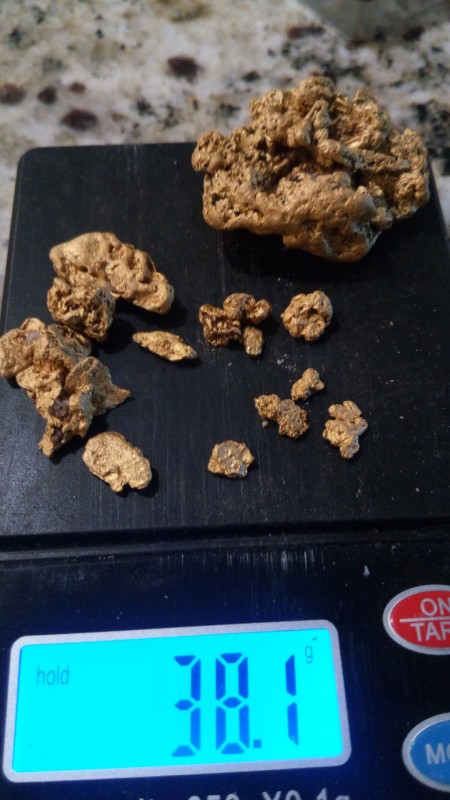
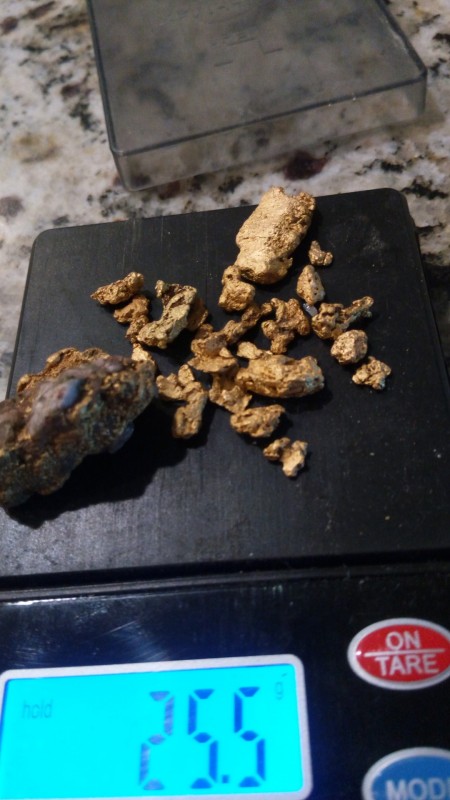
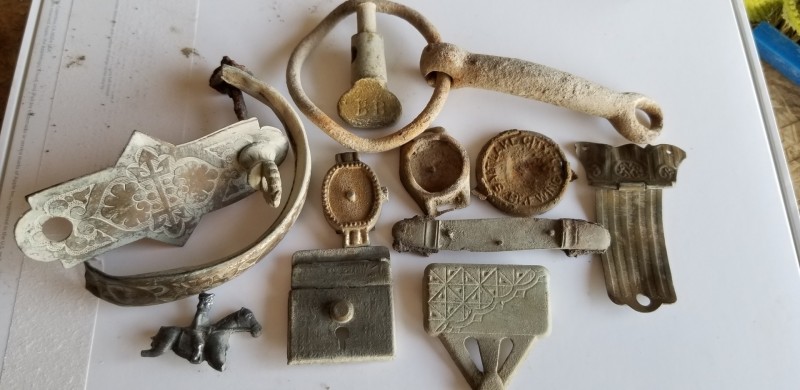
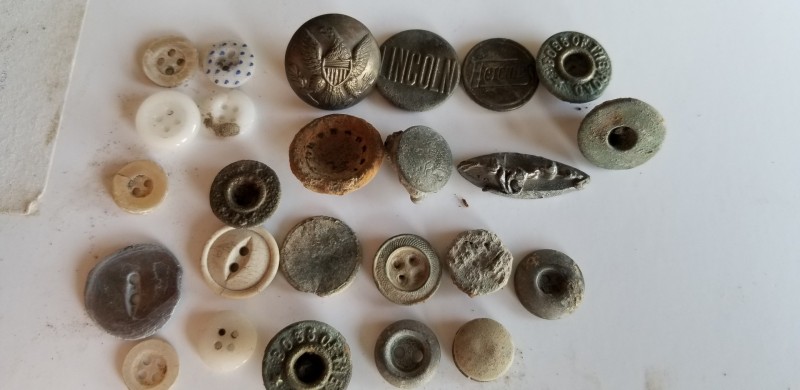
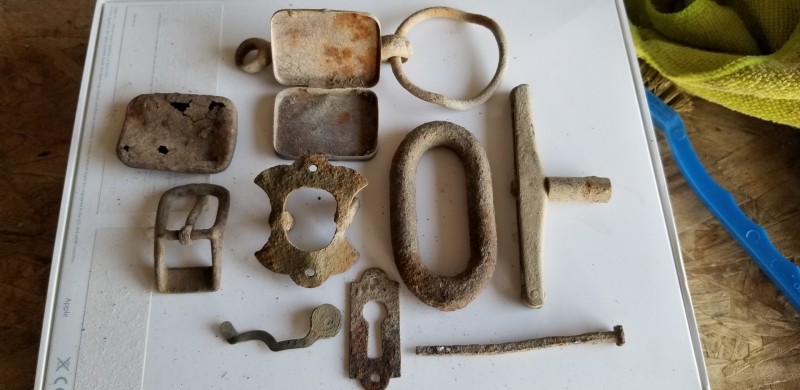
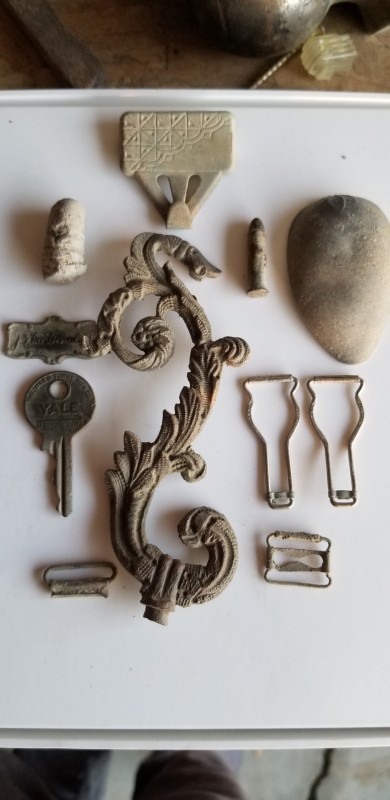
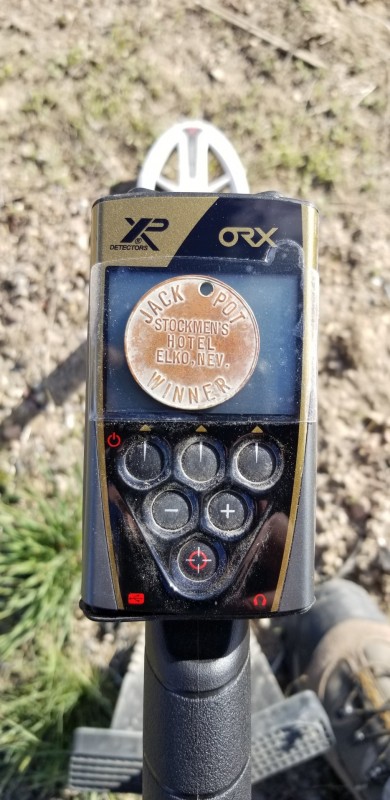
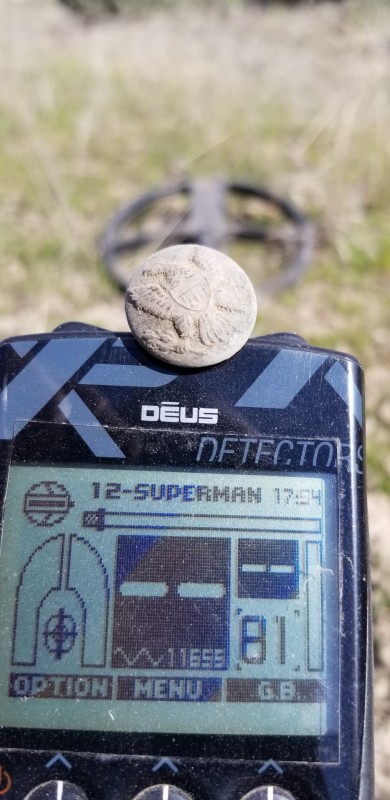
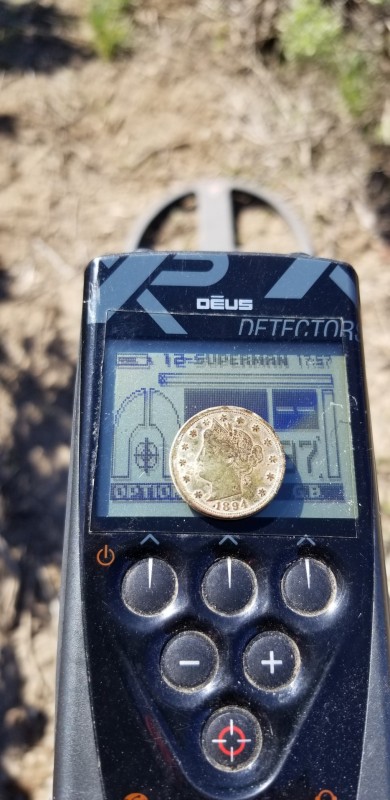
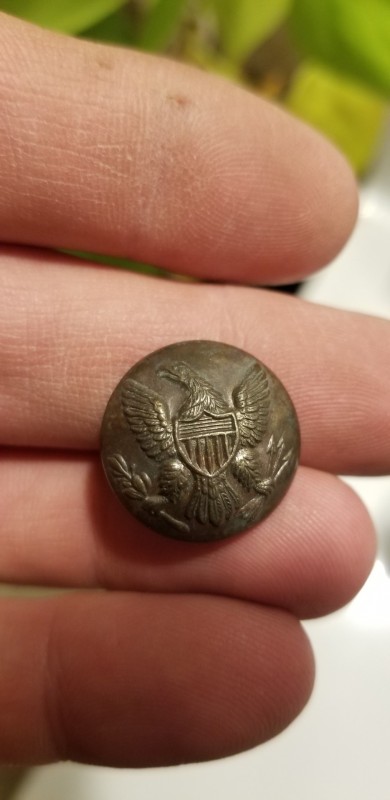
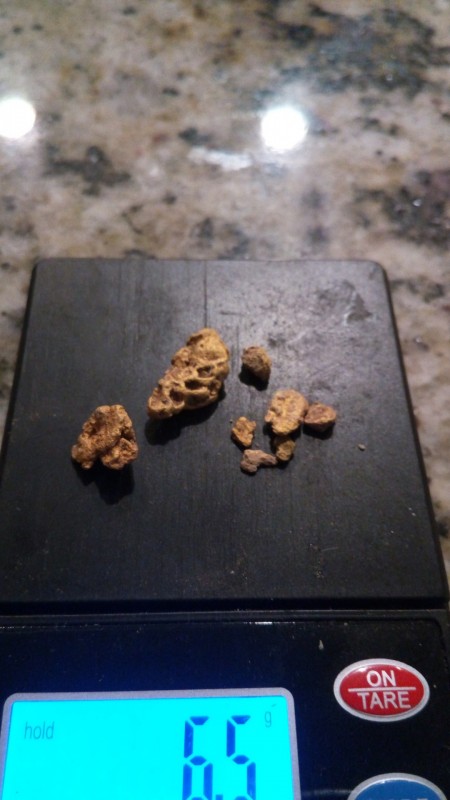

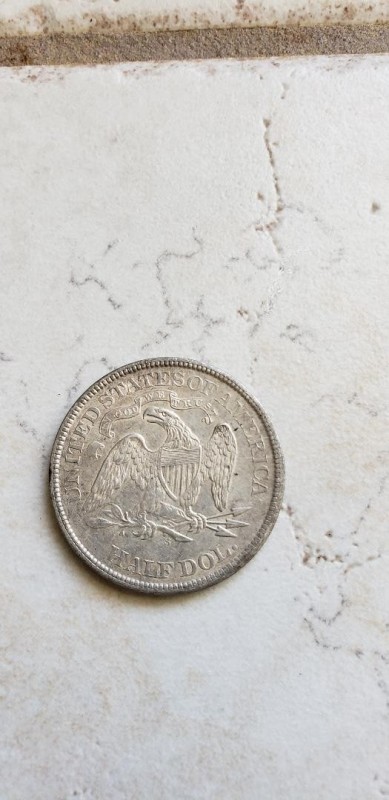
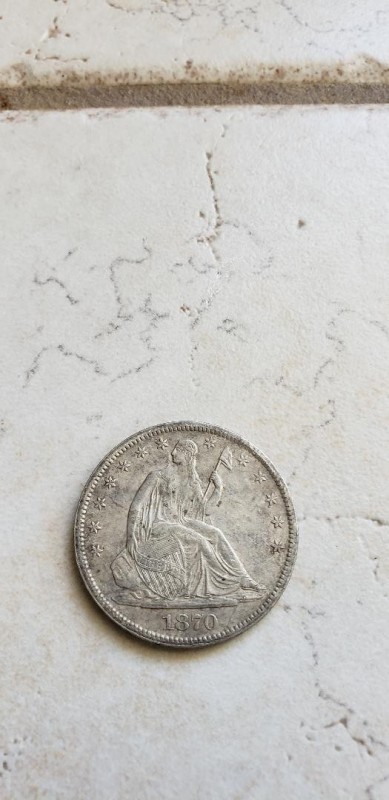
.jpg.e06f25e2f179f582dc9cb62b48ea8f87.jpg)
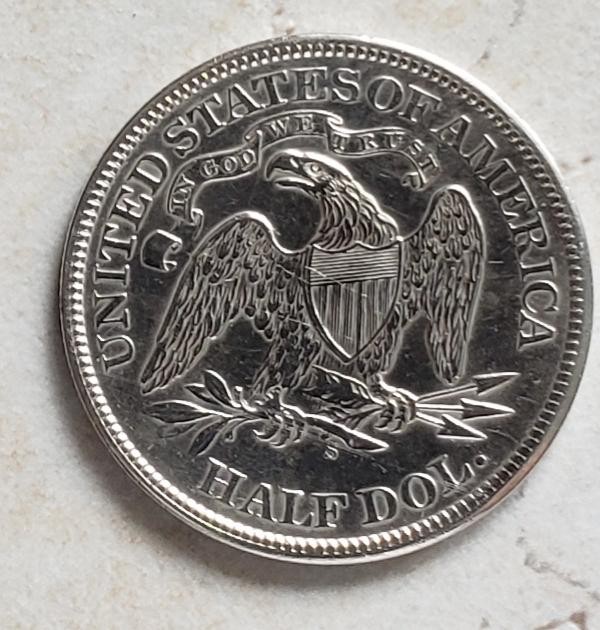
.thumb.jpg.ac5e8ee36e43bcab745dbc623fcf1874.jpg)



